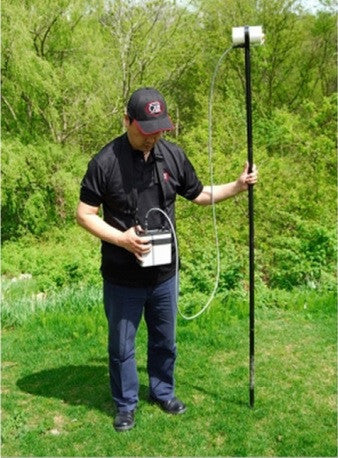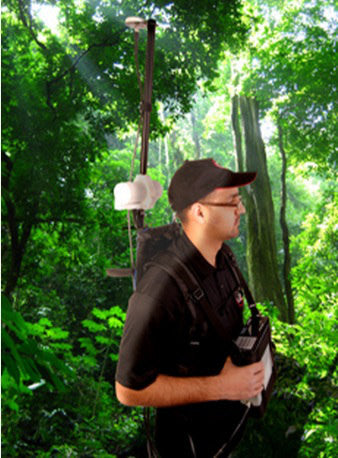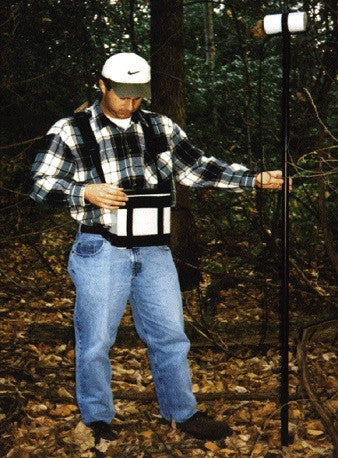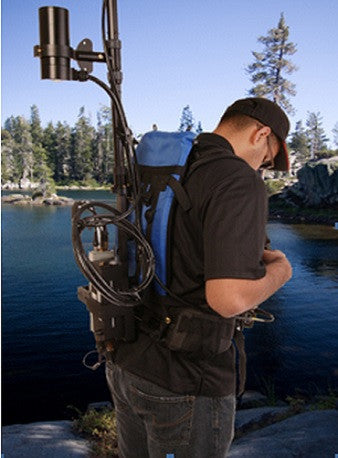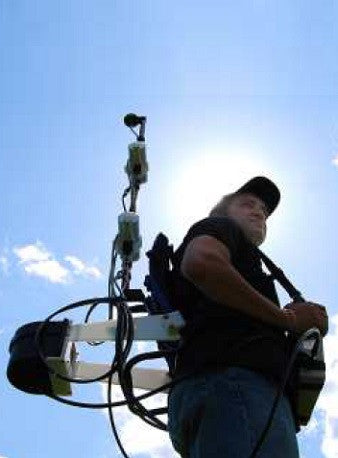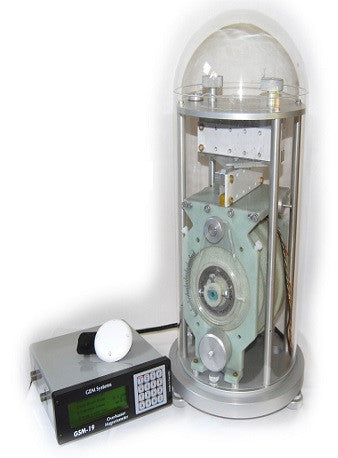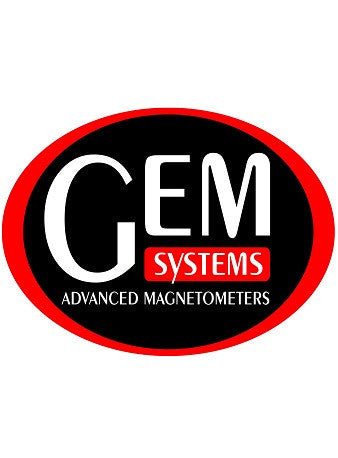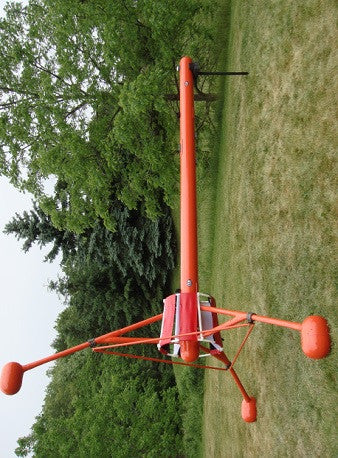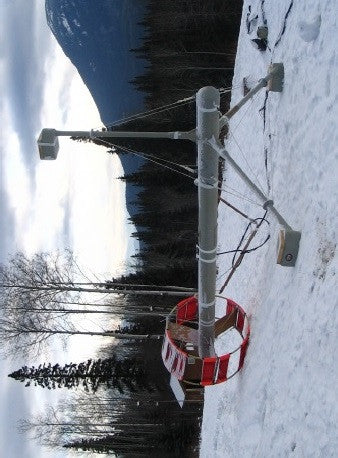Euromag Scalar Magnetometers - GSM-90
Supplied By: GEM Systems, Canada
Rs. 0.00
Scalar Magnetometers
Many magnetic observatories today rely on a combination of scalar, fluxgate and theodolite instruments for obtaining measurements. Research installations engaged in volcanology applications are also using scalar magnetometers for stationary work.
GEM’s Overhauser GSM-90 EUROMAG is particularly suited to these applications (and volcanology). This is a standard magnetometer without a display screen that can be operated via computer.
The GSM-90 EUROMAG is a scalar magnetometer of high absolute accuracy (0.2nT) and low long term drift (0.05nT /year). It isoptimized for use in magnetic observatories, long term monitoring arrays in volcanology, etc. where the following are essential:
-
long term stability and high accuracy
-
high resolution and low noise (0.022nT)
The EUROMAG is deployed in many installations, notably in observatories and on Mt. Etna, where dedicated scientists from the Instituto Nazionale di Geofisica e Vulcanologia (INGV) are using the system as a cornerstone of their research into the periodic eruptions of Europe’s active volcano.
Operating Principles
The EUROMAG is based on GEM’s Overhauser Effect technology. The EUROMAG sensor has a free radical added in contrast to standard proton magnetometer’s sensors, which only use a proton-rich liquid to produce precession signals. The free radical co-ntributes free, unbound electrons that cou-ple with protons producing a 2-spin system.
A strong RF magnetic field is used to disturb the electron-proton coupling. By saturating free electron resonance (ESR) lines, the polarization of protons in the sensor liquid is strongly increased
superior method of proton polarization - delivering stronger signals from smaller sensors and with less power (i.e. 2Ws per reading or about 0.5W average power consumption for 1 reading per 5 sec.)
GSM-90 electronics are packaged in a thick, waterproof aluminum box specially designed to operate reliably in harsh environments It is also microprocessor-based with full remote control capability. Results are made available in serial form (RS-232C interface) for collection by data acquisition systems.
Specifications
-
Sensitivity: 0.022 nT / √Hz
-
Resolution: 0.01 nT (gamma)
-
Absolute Accuracy: 0.2 nT
-
Dynamic range: 20,000 - 120,000 nT
-
Long term stability: < 0.05 nT/year
-
Sampling: GSM90: 1 sample /3 sec.
GSM-90F1: 1 sample /1 sec.
GSM-90F5: 5 samples / 1 sec. -
Sensor size: 70mm dia. X 150mm
-
Power: 12V 200mA max., 40mA average
-
RS232C parameters: programmable
For the ultimate in low power operation, consider our GSM-90L requiring only 100mW for 1 reading in 5 seconds or 300mW for 1 reading per second.
Observatory and Volcanology Applications
Up until about 10 years ago, magnetic observatories around the globe used fluxgate magnetometers as their primary tools to monitor the earth’s magnetic field. But fluxgates have the disadvantage that they must be periodically calibrated to maintain the level of absolute accuracy that is so important in observatory research.
By using an Overhauser magnetometer (EUROMAG) together with a fluxgate magnetometer, both total field and field direction information can be collected with a very high degree of absolute accuracy.
The EUROMAG instrument is the total field magnetometer/gradiometer of choice for customers who require:
-
Minimal drift (0.05 nT/year)
-
Continuous, stable measurement
-
High absole accuracy (0.2 nT)
-
High sensitivity
-
Reliability (packaged in a thick, waterproof aluminum casing)
-
Convenient operation (RS-232C used for control and acquisition)
-
Low power operation (2Ws per reading – 0.5W average for 1 reading every 5 seconds)
The GSM-90 can be thought of as an Overhauser magnetometer (GSM-19) that has been simplified for long term monitoring applications. It has no keyboard, no battery and no memory for data storage. It is controlled by a terminal such as a Personal Computer which allows for its operation to be completely automated.
EUROMAG Benefits
The GSM-90 is a high sensitivity Overhauser effect magnetometer. Main benefits include:
-
The instrument is a secondary standard for measurement of the Earth’s magnetic field. The system has 0.01nT resolution, and 0.2nT absolute accuracy over its full temperature range.
-
The GSM-90 is available in two versions – a slow reading version and a fast reading version for flexibility. Each consists of one (170x70mm) cylindrical sensor, and a sturdy aluminum package (220x245x70mm) which contains all the unit’s electronics.
-
The instrument is microprocessor based for full remote control capability and time-savings. The results of measurement are available in serial form (RS-232-C interface) for collection by data acquisition systems, terminals or computers. The same RS-232 link provides the means of control to the instrument.
Other Benefits are:
-
Integrated GPS (time reception) option ... the only system with fully built-in GPS
-
25% increase in sensitivity over GEM’s v7.0 system
-
Choice of sampling rates from 3 seconds, 1 second and 0.2 seconds ... with variable sampling intervals to 3600 seconds
-
Weather-proof housing for harsh environments
-
Overhauser sensor with enhanced robustness
-
Rapid data transfer at speeds up to 115 kilobaud (using GEM’s proprietary GEMLinkW software)
-
Internet-based upgrades (from the office or field)
Understanding the GSM-90 Measuring Sequence
The GSM-90 is a compact version of the GSM-19 Overhauser magnetometer that:
-
Cycles from 0.2 seconds to 1 hour (depending on the version – Fast or Slow)
-
Includes a standard “Observatory” mode. Observatory mode measures over 5 second intervals and outputs an average value every minute. The time of the averaged reading is considered to be the time of the middle reading.
-
Can optionally be equipped with an AC deflect pulse (long or short) in order to minimize interference with other observatory instruments.
The instrument does not have a keyboard and display; therefore, all control of the instrument is through a computer or terminal.
GEMLinkW (PC Software) supplied with GSM-90 can be used for this purpose. Any other communication software commercially available (like Xtalk, Flashlink Mirror, Hyperlink etc.) capable of sending and receiving RS232 can also be used. Communication is very simple and requires sending only few bytes to the magnetometer.
Related Products

